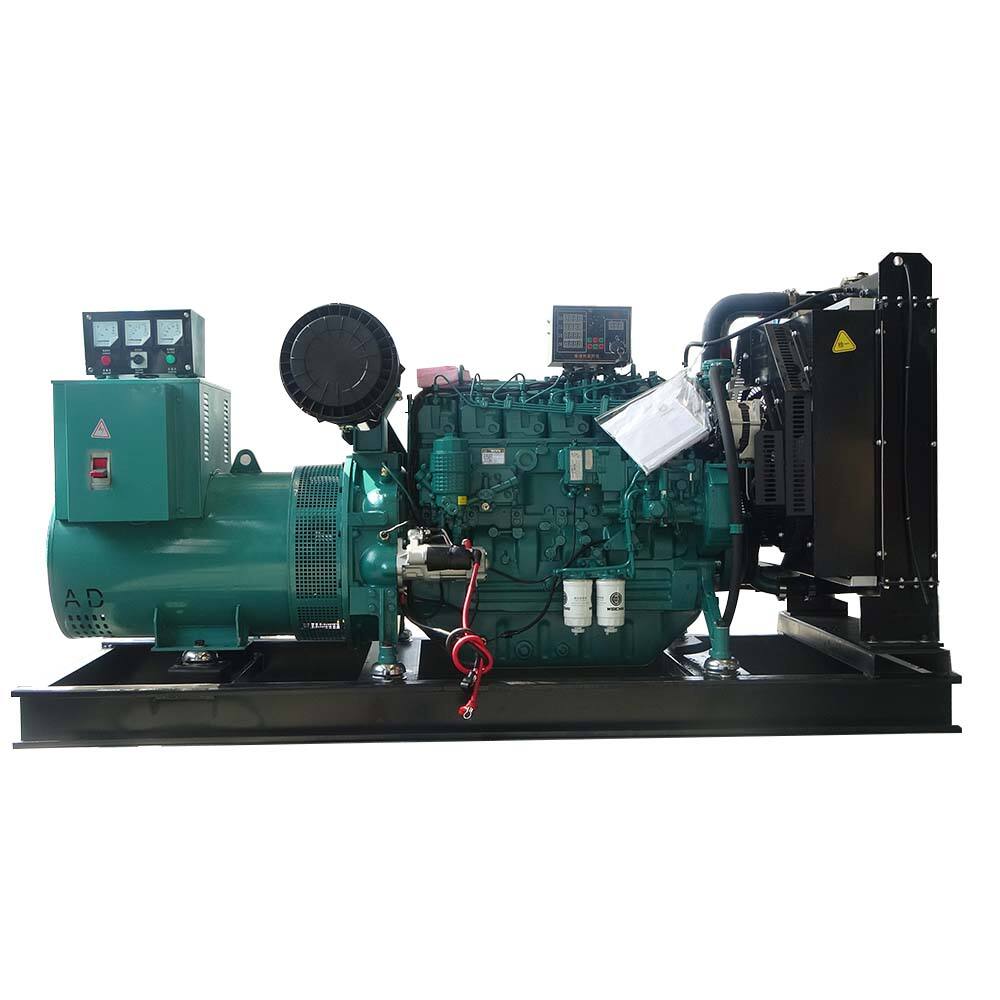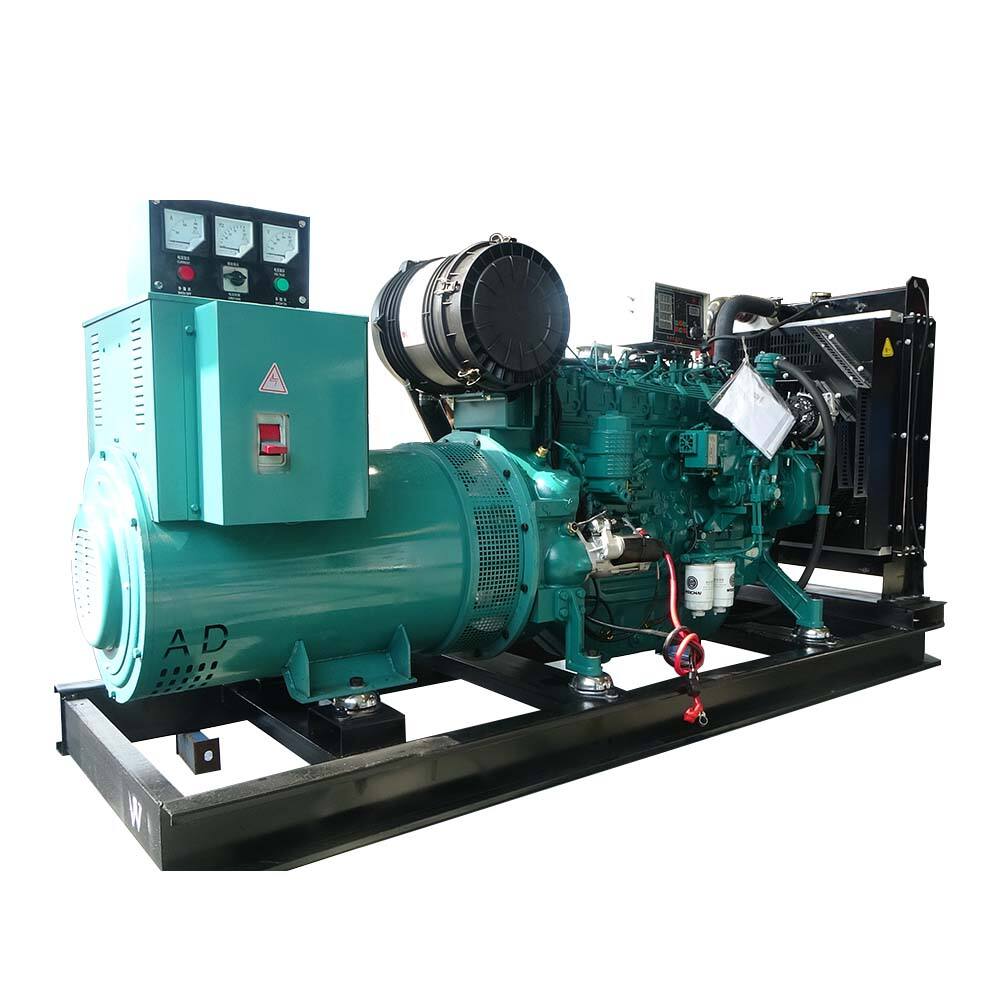Nola aukeratu energia sortzaile eramangarria zure beharretarako
Energia sortzaile eramangarriak tresna dibertsuak dira, camping bidaietarako elektrizitatea ematen dutenak, eTORKIZUNA larrialdiak, kanpoko ekitaldiak eta lan lekuak. Eredu askoren aukeran dago—1.000 watko unitate txikietatik 10.000 watko makina indartsuetara—zuzenekoaren aukeraketa zure beharretan, aurrekontuan eta erabilera egoeretan oinarrituko da. Energia portagarriaren sorgailu okerra hautatzeak kezkagarritasuna (adibidez, energia gutxi gabezia) edo behar ez diren gastuak izan ditzake (adibidez, behain baino potentzia handiagorako ordaintzea). Garrantzitsuena diren faktoreetan arreta jarriz, hala nola potentzia irteeran, erregai-motan, eramangarritasunan eta ezaugarrietan, potentzia portagarriaren sorgailu bat aurki dezakezu emaitza eta praktikotasunaren artean oreka mantentzen duena. Aztertuko dugu prozesua urratsak banan-banan.
Zure beharrizan elektrikoak zehaztu
Energia portagarriaren sorgailu bat aukeratzeko lehenengo eta garrantzitsuena da behar den energia kopurua kalkulatzea. Energia sortzaile eramangarriak beren watt kopuru maximoagatik (hasiera watt) eta abiadura-abiaduragatik (jarraibidezko watt) baloratzen dira. Hasiera watt-ek motorrekin funtzionatzen duten gailuak abiarazteko beharrezkoak diren indar-jasokada adierazten dute (adibidez, hozkailuak, aire kondizionatuak), berriz abiadura-watt-ek beharrezko indar geldikorrak mantentzeko behar dituzte.
Kalkulatu zure watt beharrak
- Zerrendatu aldi berean potentzia eman nahi dizun gailu guztiak. Txiki elektronikoetan (telefonoak, ordenagailuak) eta handietan (izozkailuak, tresna elektrikoak) sartu den guztia.
- Gailu bakoitzaren watt egiaztatu (etiketan, erabiltzaile eskuliburuan edo fabrikatzailearen webgunean aurkituko duzu). Motorrekin funtzionatzen duten gailuentzat, hasiera watt eta abiadura watt biak aipatu (hasiera watt gehienetan abiadura watt baino 2–3 aldiz altuagoak izaten dira).
- Abiadura watt guztien batuketa egin zure abiadura watt minimoa lortzeko beharrezkoa da. Gehitu hasiera watt altuenak (aire kondizionatu bezalako gailuetatik) guztira, generadoreak jaso ahal izateko jasokada hori.
Adibidez:
- Frigoridagailu bat (700 wat ioan, 1.400 wat hasieran) + ordenagailu bat (60 wat) + argi LEDak (100 wat) = 860 wat ioan. Gehieneko hasiera wat zenbakia gehituz (1.400), guztira 2.260 wat izango ditugu. Gutxienez 2.500 hasierako wat eta 1.000 wat ioan dituen generadore elektriko portagarri bat funtzionatuko luke.
Watt kopuru ohikoen beharrak:
- Kanpamendua/Atmosfera kanpoa: 1.000–2.000 wat (telefonoak, hotzegileak, tresna txikiak elikatu ditzake).
- Etxeko larrialdiak: 3.000–5.000 wat (frigoridagailuak, argiak, haizagailuak, berogailu txikiak zehar erabili daitezke).
- Lan lekuak: 5.000–10.000 wat (tresna elektrikoak, soldadurak, konpresoreak maneiatzeko gai da).
Ahal den baino aurreneko potentzia handiagoa hobeto da potentzia txikiagoa baino, baina saihestu beharrezkoa baino askoz potentzia gehiago duen generadore elektriko portagarri bat erostea—astunagoa, astiroagoa eta erregai gutxi eraginkorra izango da.
Aukeratu Erregaia Motu Egokia
Indar-portaera mugikorrak hainbat motatako erregaien gainean funtzionatzen dute, bakoitzak bere abantailak eta desabantailak dituelarik kostuaren, eskuragarritasunaren eta konfortuaren aldetik. Erregai-mota onena zure erabilera maiztasunaren, biltegiratze ahalmenaren eta erregai-iturriren eskuragarritasunaren arabera izango da.
Gasolina
Gasolinak indar-portaera mugikorretan gehien erabiltzen den erregaia da, gasolindegietan erraz aurki daitekeena. Eraikuntza-ustiapenentzako edo energia-etekin laburrentzako erabilera izateko aproposa da (adibidez, kanpamenduetarako edo etekin laburrak) bere eskuragarritasunagatik. Hala ere:
- Abantailak: Erraz aurkitzea; gehienetan erabilgarria da tamaina txikiko edo ertaineko portaeretan; hasierako kostuak generatorarentzat merkeagoak dira.
- Desabantailak: Iraungitze-data laburra (estabilizatu gabe 30–60 egun); suzko substantzia osoa da, segurtasunez gorde beharrekoa; beste erregai batzuk baino igorpen gehiago sortzen du; propanoaren baterako efizientzia txikiagoa da.
Gasolinazko indar-portaerak erabiltzaileentzat aproposak dira gutxitan eta denbora laburrez erabili behar duten kasuetan eta erregaiari buruzko sarbidea dutenentzat.

Propanoa (GLP)
Propanoa garbi erretzen den erregaia da, ontzitan gordetzen dena, beraz, popularki erabiltzen da bi helburutan eTORKIZUNA eta kanpoan erabiltzeko.
- Abantailak: Apaintzako iraupen luzea (amaiezina gorde behar bezala bada); gasolinak baino garbiagoa erretzen da, mantenua murriztuz; erreza da deposituetan gorde fuela; eremuren urrunetan eskuragarri dago.
- Desabantailak: Propano ontziak gasolina ontzietan baino handiagoak dira; sortzaileek aurrez gehiago ordaindu dezakete; energia dentsitate txikiagoa (gasolinarekin denbora berdina lortzeko fuel gehiago behar da).
Propanoz funtzionatzen duten energia portagarrien sortzaileak larrialdi egoeretarako aproposak dira, fuelaren kalitatea ez delako degradatzen eta igorpenen inguruko arazoak dituzten erabiltzaileentzat ere.
Bikoitza (Gasolina + Propanoa)
Energia bikoitzeko sortzaile portagarrek malgutasuna eskaintzen dute, eskuragaiaren arabera gasolina edo propano artean aldatu ahal izateko.
- Abantailak: Erregai iturri bakarrean oinarritzea murrizten du; erregai falta garaian baliagarria (adibidez, euri ondoren); gasolinaren erraztasuna eta propanoaren iraupena konbinatzen ditu.
- Desabantailak: Pisuz pixka bat gehiago eta modelu bakunak baino garestiagoak izan daitezke; eraginkortasun pixka bat txikiagoa izan dezakete propanoarekin martxan daudenean.
Erabilera anitzeko aukera da erabiltzaileentzat, bereziki baldintza larrietan non erregaia lortzea ezin den aurreikusi.
Diesela
Energia-portua dituzten generadoreak iraunkorrak eta erregai-eraginkorrak dira, lan astunetarako eta luzatzeko erabilerarako egokiak (adibidez, eraikuntza guneetan).
- Aldeak: Eraginkortasun handiko erregaiaren errendimendua (gaztuan ordaintzen duen energia gehiago); diesel motorrek gasolinako motorrekin alderatuta irauten dute gehiago; erregaiak su hartzen du gutxiago, seguruagoa da biltegiratzeko.
- Desventajak: Hasierako prezio altuagoa; zailagoak eta zarata gehiago sortzen dute; diesel erregaiak gelatzen egin daiteke tenperatura baxuetan; zenbait tokutan eskuragarri gutxiago dago.
Generadore dieselak profesionalentzat edo maiz eta ordu luzez energia-portua behar duten erabiltzaileentzat izaten dira onenak.
Portabilitatea eta Tamaina Ebaluatu
Portabilitatea energia-portuen generadoreen ezaugarri nagusietako bat da, baina "portabil" izateak esanahi desberdinak ditu erabiltzaile bakoitzarentzat. Kanpamendira eramateko erraza den generadorea etxeko jabe batek larunaldi batean mugitu behar badu, pisu handiegia izan daiteke.
Pisua eta Neurriak
- Model arinak (50 libra baino gutxiago): Kanpamendurako edo atzeko izkinetarako ideala. Generadore hauek, 1.000–2.000 wattekoak, sarri eskularrak dituzte eramatea errazteko.
- Ertaineko modelak (50–100 libra): Honentzako egokiak eTORKIZUNA erabilera. Haragailuak eta luzatzen diren eskularrak izan ditzakete, baina autoan sartzea ahalegin bat eskatzen du oraindik ere.
- Model indartsuak (100 libra baino gehiago): Lan lekuetan edo erabilera larrietarako diseinatuta. Haragailuak behar dituzte eta norbanako bi behar izan daitezke mugitzeko.
Neurtu biltegirako espazioa (garajea, txabola) generadorea ez dagoen bitartean doitasunez sartzen den egiaztatzeko. Portaera elektriko txiki baten generadorea biltegiratzeko errazagoa da baina potentzia galtzen du; orekan jarri tamaina zure wat-en beharrarekin.
Mugikortasun ezaugarriak
Begiratu:
- Haragailuak: Pneumatikoak (airez beterakoak) terrain zaila jotzen dute (kantxarrak, lan lekuak), berriz solidoak gainazal leunetarako balio dute (ibiltokiak).
- Eskularrak: Luzatzen diren eskularrak arintzen dute haragailuez eramaten danean; aldeko eskularrak laguntzen dute igotzerakoan.
- Diseinu konpaktua: Galdara baino altuagoak diren, bertikalki eraikitako generadoreek tokia aurreztuko dute biltegiratzerako orduan.
Kontsideratu zarata-mailak
Zarata garrantzitsu da etxean erabiltzeko, kanpindegietarako edo zarata-murrizketak dituzten inguruetarako bereziki. Energia-portaera mugikorrak dezibelioetan (dB) baloratzen dira, zenbaki txikiagoak isilagoak izanik.
- Generadore isilak: 50–60 dB (hitzordu batekin baliokidea; kanpindegietarako edo auzoetarako egokia). Gehienetan diseinu itxiak eta silbazailuak dituzte.
- Zarata ertaina: 60–70 dB (huts-bilbil batekin antzekoa; onartegarria lan-lekuetan edo etxean erabilpen motzetarako).
- Generadore lautuak: 70+ dB (lur-jasotzaile baten antzekoa; urruneko inguru edo industria-guneetarako egokia).
Egiaztatu fabrikatzailearen espezifikazioak zarata-mailen inguruan karga %25ean (erabilpen arrunta), geldialdiarekin alderatuta, benetako egoeretako zarata irudikatzeko. Inbertidoreko generadoreek (azpian ikusiko dena) oro har isilagoak dira konbentzionalenak baino, horregatik ingurune zarata-sentsibleetarako ideala.
Inbertidorea eta Generadore Konbentzionalen arteko aldea
Energia-portaeragailu eramangarriak bi kategoritan banatzen dira: konbentzional (estandar) eta inbertitzaile motakoak, bakoitzak abantaila bereziak dituena.
Jeneratzaile Konventionalak
Hauek abiadura finkoko motor bat erabiltzen dute zuzenean AC energia sortzeko. Eskuragarri diren aukera ekonomikoagoak eta potentzia handiagoak dira, baina gutxi eraginkorrak dira karga txikientzat.
- Abantailak: Hasierako kostu txikiagoa; watios kopuru altuagoa eskuragarri (10.000+ wattiora arte); iraunkorrak erabilera astunetarako.
- Desabantailak: Soinujasoagoak; erregaia gutxi eraginkorra karga txikietan; energia irteera "zaharragoa" izan daiteke (tentsio aldakorra), arriskua suposatuz gailu sentikorretan (ordenagailuak, telefonoak).
Ondo funtzionatuko duen lekua: Lan-lekuak, elektrizitatea behar duten tresna handiak martxan jartzeko edo aurretik ezarritako zerrenda estu batekin lan egiten duten erabiltzaileentzat.
Inverter Jeneratzaileak
Inbertitzaile generadoreek elektronika aurreratuak erabiltzen dituzte AC energian DCra bihurtzeko eta garbi den ACra berriro itzultzeko, egonkortasuna duen "uhin sinus puru" motako energia sortuz.
- Abantailak: Isilagoa; erregaiaren eraginkortasuna (motorraren abiadura kargarekin doitu dezake); segurua gailu sentikorrentzat; maiz paraleloan erabil daitezke (bi generadore lotu ahal dira energia gehiago lortzeko).
- Des: Aurreko kostu altuagoa; wattage maximo txikiagoa (azpian dauden gehienak 7.000 wattez).
Onena da: Kanpindegia, etxeko larrialdiak (telefono/ordenagailuen kargarako) eta potentzia garbia behar dutenek. Haien eraginkortasunak erabilera luzatzeko ideala bihurtzen ditu, erregai gutxiago erabiltzen dutelako.
Erabilgarritasuna hobetzeko ezaugarriak
Ezaugarri gehigarriek energia sortzaile portagarria erosoa eta segurua izatea ahalbidetzen dute, kasu berezi batzuetan batez ere.
Segurtasun ezaugarriak
- Olio-maila baxua duten geldialdiak: Automatikoki itzaltzen du sortzailea olio-maila baxua bada, motorraren kalteak saihesteko.
- Korronte ebakitzaileak: Sortzailea eta gailu konektatuak gainkargetatik babesten ditu.
- Lurraren akoplamenduko hutsegite-ebagitzailearen irteerak (GFCI): Ura dagoenean elektrizitate zokorik ez izatea ahalbideratzen du (kanpoan erabiltzeko beharrezkoa).
Erosotasun-ezaugarriak
- Irteera anitzak: 120V, 240V eta USB atakoen nahasketa desberdinekin, gailu ezberdinak pizteko aukera ematen du. Bilatu atorni-blokeo irteerak lan astuneko tresnetarako.
- Elektrizitatez abiaraztea: Saihesten du eskuzko hasiera mekanikoa (bateriarekin bultzatuta dago; modelo batzuek atzera mugimenduko babes-sistema dute).
- Erregairen markagailua: Tankea ireki gabe erregai-mailak ikusteko aukera ematen dizu.
- Paralelotasun ahalmena: Bi inbertitzaileko generadoreak elkartzea ahalbidetzen du, potentzia bikoiztuz (erabilgarria izaten bada watt-kopuru gehiago behar dituzu).
Erregaiaren eraginkortasuna eta lanaldiaren iraupena
Lanaldiaren iraupena (ordu kopurua tanke bakoitzeko) erregai-ahalmenaren eta kargaren arabera aldatzen da. 5 galoi-ko tanke bat duen generadore batek 8–12 orduz lan egin dezake karga %25ekoa dagoenean, baina 3–4 ordu besterik ez duela beteko dagoenean. Hobetsi lanaldi luzeagoa eskaintzen duten modeluak, karga ohikoenetan, betegarrien maiztasuna murrizteko, bereziki larrialdi unetan.
Marka eta bermearen kontsiderazioak
Marka on baten aukerak ematen du fidagarritasuna eta piezen eta laguntzaren sarrera. Energia elektrikoaren generadore portagarrien artean, Honda, Yamaha, Generac, Briggs & Stratton eta Westinghouse dira aipagarrienak.
Bermerako denbora marka fabrikatzailearen konfiantza islatzen du:
- Sarrera-mailako modeluak: 1–2 urte.
- Ertaineko maila: 3–5 urte.
- Goiko mailako modeluak: 5–10 urte.
Beraria luzera gehiago izatea balio du generadore garestientzat, konponketak garesti izan daitezkeelako. Egiaztatu berariak piezak eta lanaren mantentzea babesten dituen eta errazko mantenugai diren zerbitzu-zentro lokalak daudela.
OHARRA: Energia Generadore Erabilgarrien Aukeraketa
Nor ahal du energia elektriko baten aire kondizionatzailea martxan jarri?
Bai, baina egiaztatu AC-ren hasiera eta indarrean dauden watiosak. 5.000 watio-ko generadoreak normalean 10.000 BTU-ko leiho bat (hasierako watt ~ 2.000, korrika ~ 1.000) maneiatu ahal izango ditu. Zentralizatutako AC unitate handiagoek 7.000+ watios beharko lituzkete.
Nola gorde nuke seguruenergia generadore eramangarriarentzat?
Erabili onartutako edota etiketatutako ontziak (gasolinarekin 5 galoi arte gehienez) eta gorde leku epel eta ondo aeriarian dauden iturri beroetatik urruti. Gehitu gasolinari estabilizatzailea bere iraupena luzatzeko. Propano botilak bertikal kiroltu behar dira, kanpoan eta eguzki zuzenetik urruti.
Generadore handiagoa erostea komenigarria izango litzateke?
Zerbait handiagoa hobea da zorizko kargak kudeatzeko, baina ekidin gainbehera handiegia. %50–75 kargarekin martxan dagoen generadore bat eraginkorragoa da gasolina kontsumoan eta 100ean edo %10ean hutsik dagoen baten aurrean iraungo du gehiago.
Nor naiz gela portatil baten energia generadorea erabili ahal euria?
Ez, euriarekin kontaktu zuzenak elektrokuzioa eragin dezake. Erabili generadorearen gainean babesa waterproof edo jarri babeslekuan, kanpian adibidez, aireztapen onarekin eta alboak irekita. Inoiz ez erabili barne edo espazio itxietan.
Zenbat mantentze lan behar du energia elektriko portatil batek?
Aldatu olioa lehenengo 20 ordutan, gero 50–100 ordu bakoitzean. Garbitu edo aldatu aire iragazkiak maiz, eta martxan jarri generadorea hilean behin gasolina kaltetzea ekiditeko eta piezak lubrifikatuta mantentzeko. Invertidore generadoreek agian mantentze lan gutxiago beharko dute modelo arruntak baino.
Edukien zerrenda
- Nola aukeratu energia sortzaile eramangarria zure beharretarako
- Zure beharrizan elektrikoak zehaztu
- Aukeratu Erregaia Motu Egokia
- Portabilitatea eta Tamaina Ebaluatu
- Erabilgarritasuna hobetzeko ezaugarriak
-
OHARRA: Energia Generadore Erabilgarrien Aukeraketa
- Nor ahal du energia elektriko baten aire kondizionatzailea martxan jarri?
- Nola gorde nuke seguruenergia generadore eramangarriarentzat?
- Generadore handiagoa erostea komenigarria izango litzateke?
- Nor naiz gela portatil baten energia generadorea erabili ahal euria?
- Zenbat mantentze lan behar du energia elektriko portatil batek?

